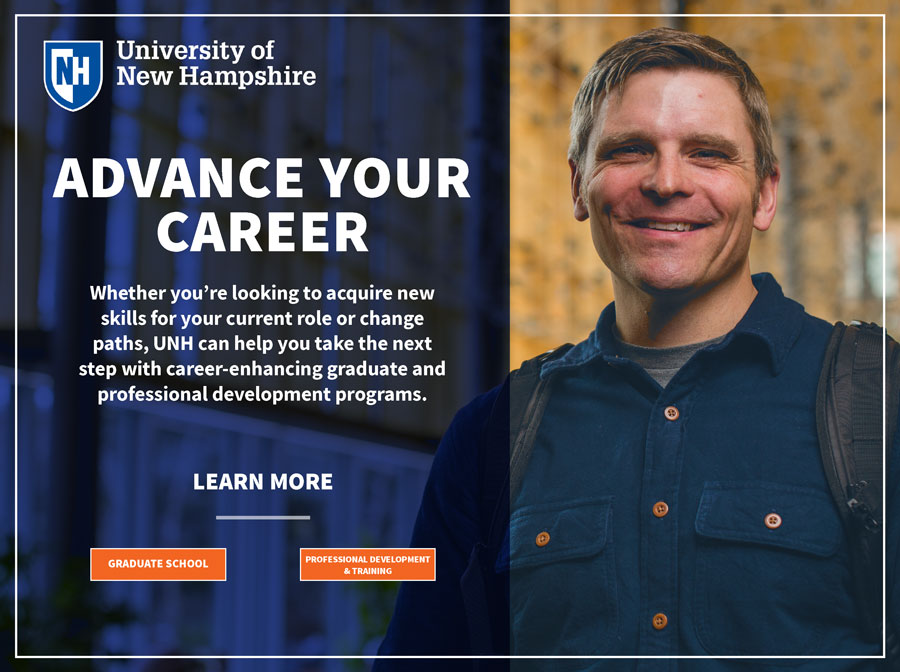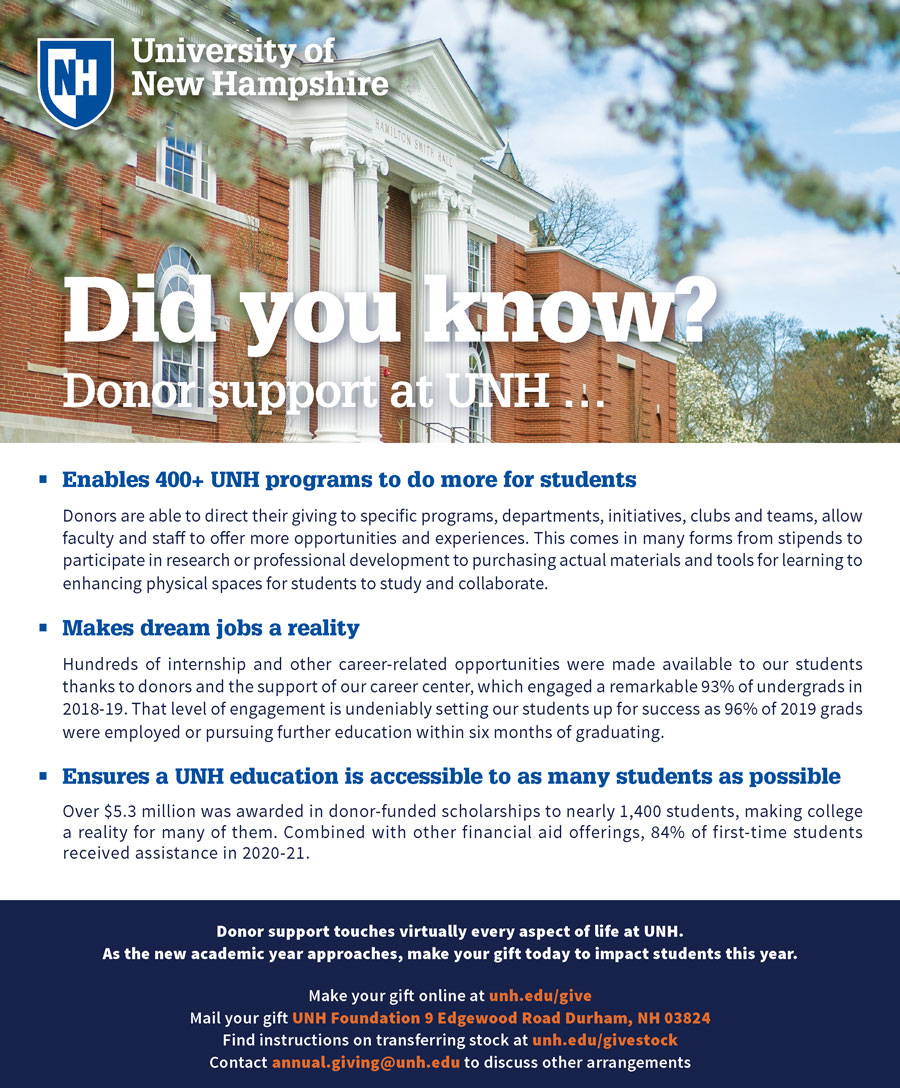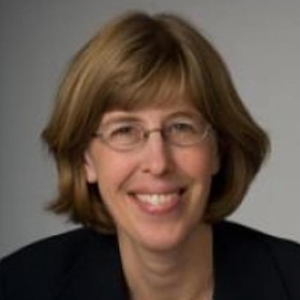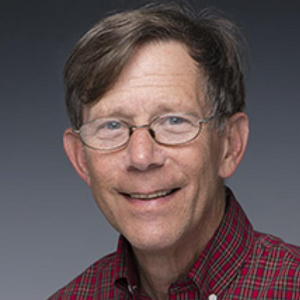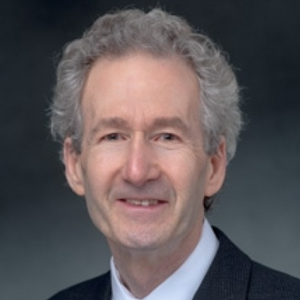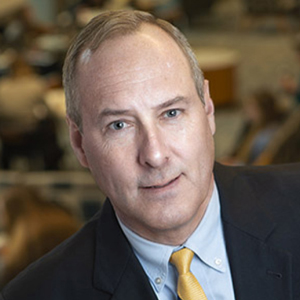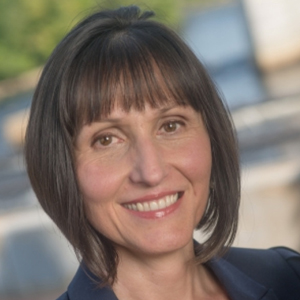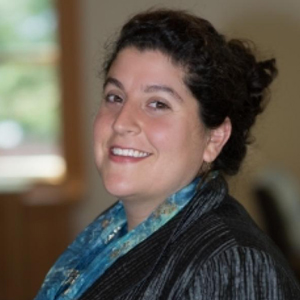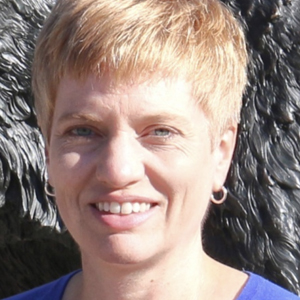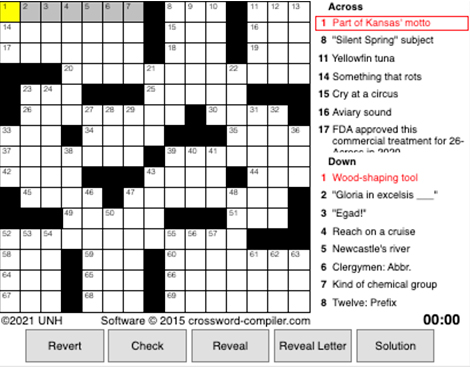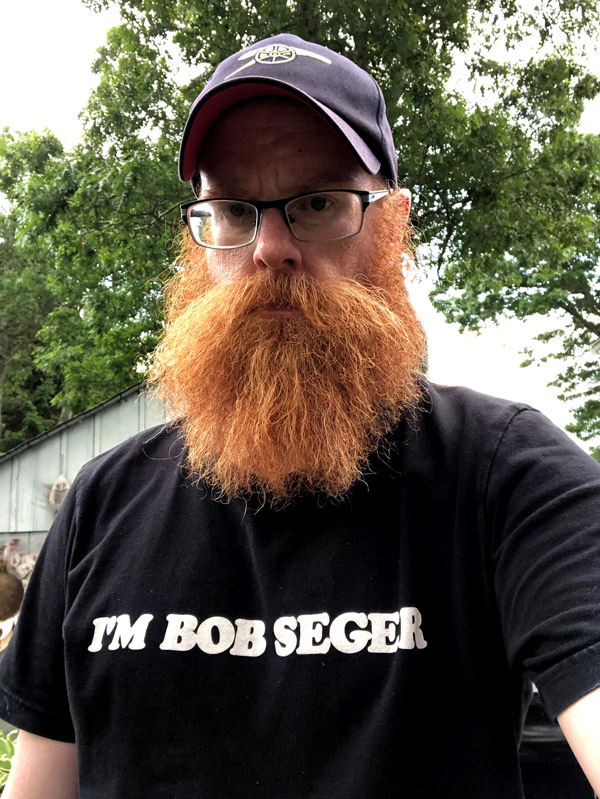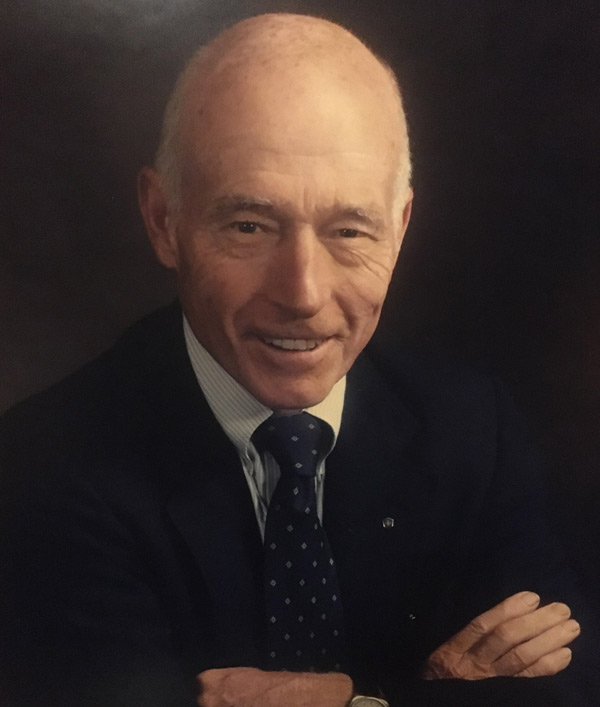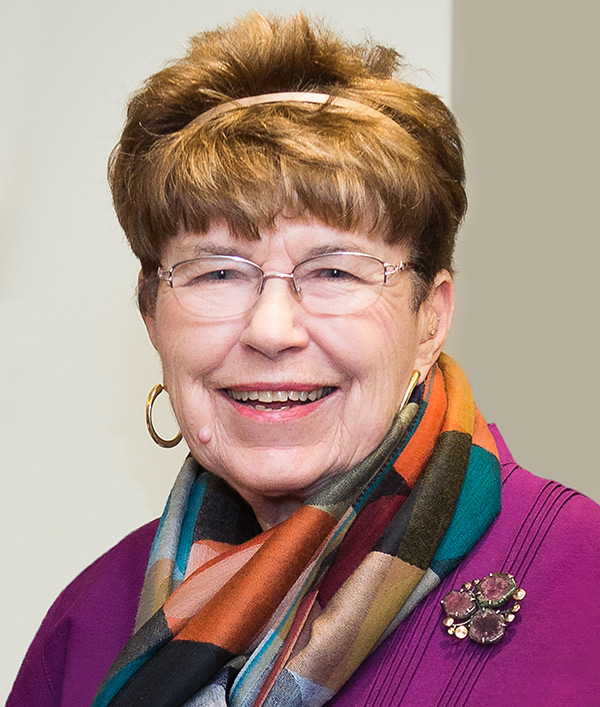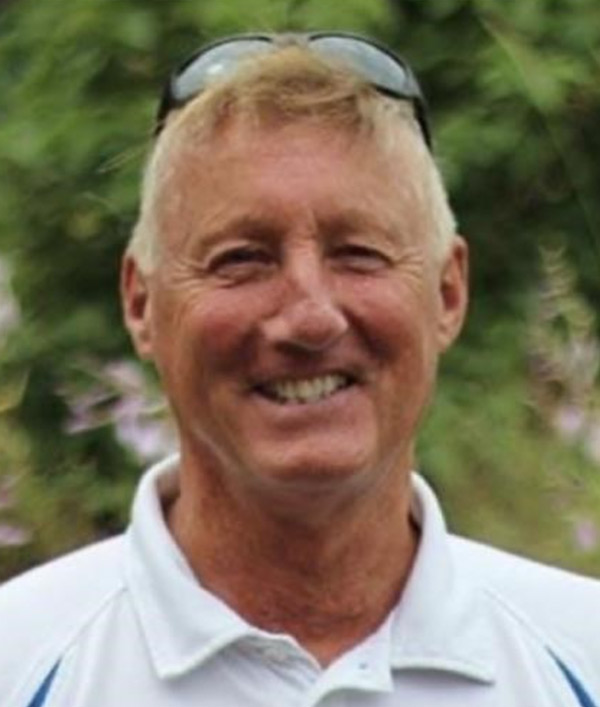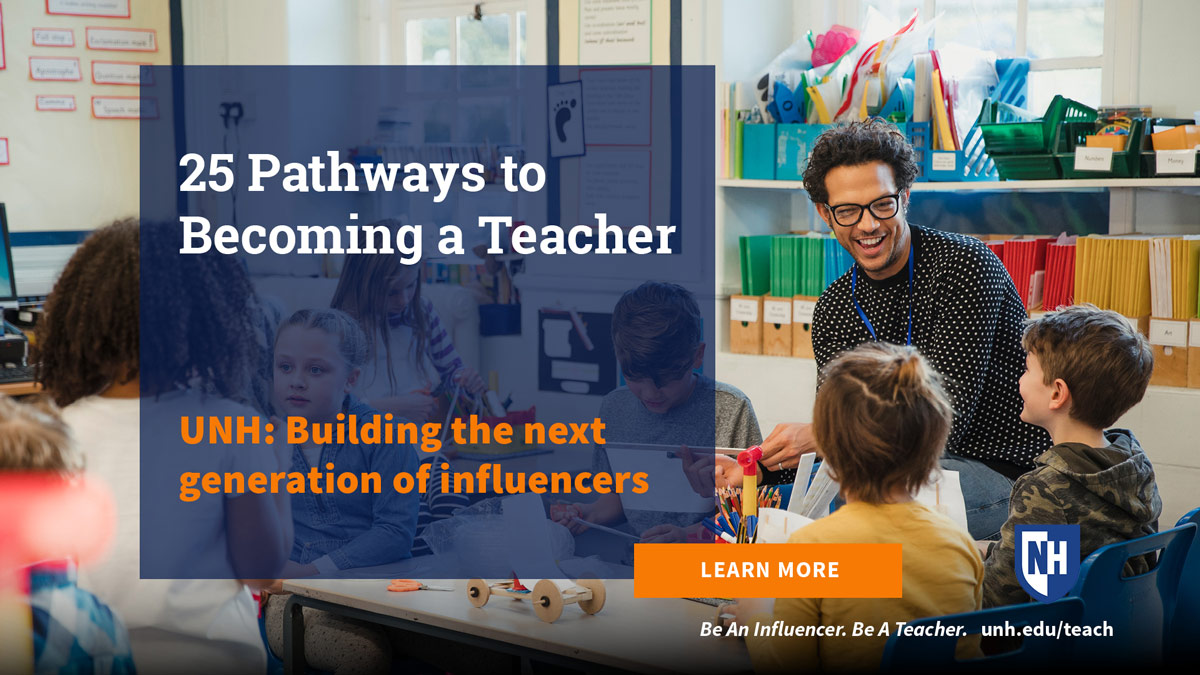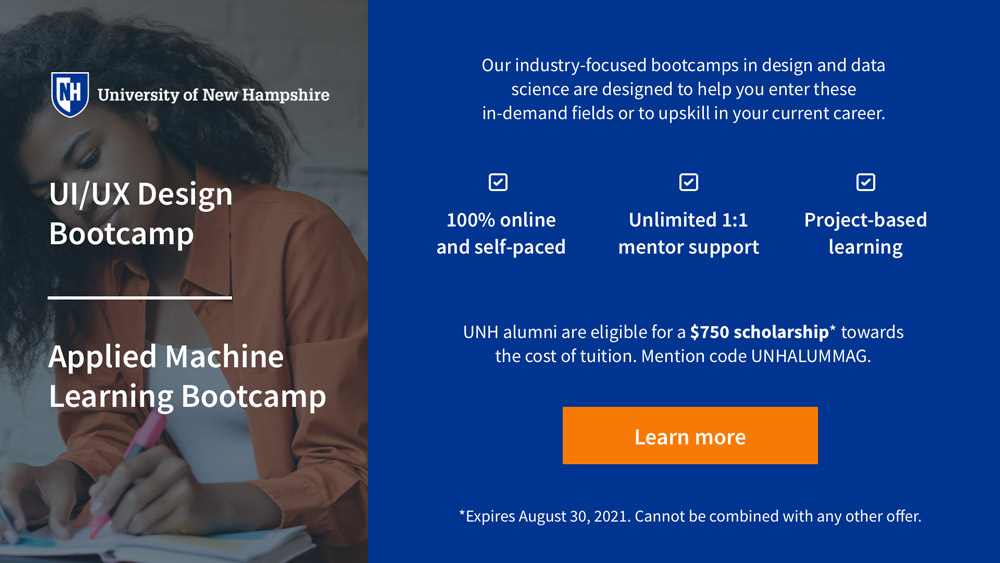
and Loss
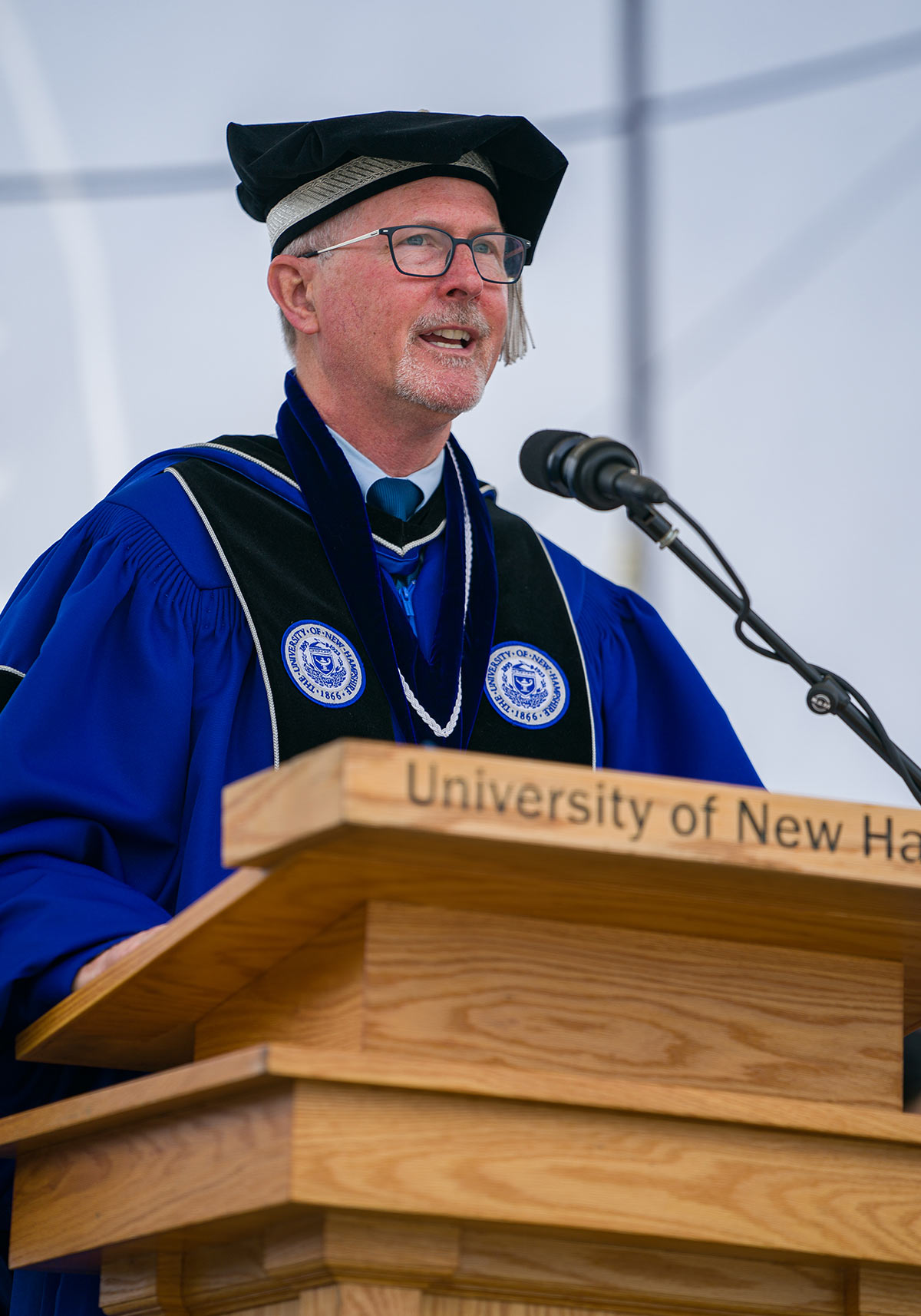
ernon Law won baseball’s Cy Young Award for pitching in 1960 when he went 20-9 for the Pittsburgh Pirates, but he is remembered today as much for his insights about performance and success, including this favorite: “Experience is a hard teacher because she gives the test first, the lesson afterward.”
COVID-19 certainly tested our university and everyone in the Wildcat family, and it taught us countless lessons about getting through a pandemic — from the steps we took to protect health and safety to the ways we taught, worked and learned to how we delivered research and support to businesses, communities and families across New Hampshire. And no matter how great online video technology is, we learned that sharing a cup of coffee with a friend over a computer just isn’t the same as sitting across the table from each other at a local café.
Thankfully, as this issue of the UNH Magazine is being prepared, COVID-19 appears to be coming under control. Restrictions have been dialed back on our campuses and across the nation. More people are getting vaccinated. At long last, they are reconnecting in-person with friends and enjoying their first real vacations away from home in more than a year — and on Friday afternoons, most of them seem to be coming to our beautiful Granite State.
Our experiences have taught us so much. And importantly, we are putting the lessons we learned into practice to create great opportunities, streamline our work and bring innovative ideas to fruition.

Kristin Waterfield Duisberg
Class Notes Editor
Allison Battles ’02
Feature Writers
Kristin Waterfield Duisberg
Michelle Morrissey ’97
Jody Record ’95
Contributing and Staff Writers
Lori Tyler Gula PhD ’06G, ’19G
Sharon Keeler
Allen Lessels ’76
Brooks Payette ’12
Robbin Ray ’82
Jody Record ’95
Kassidy Taylor
Keith Testa
Contributing and Staff Photographers
Aram Boghosian
Bob Child/AP
Chelsey DiGiuseppe
Leah Fasten
Sean Fine
Jeremy Gasowski
Andy Lyons/AP
Dana Smith
Peter Souris
Matt Troisi ’22
David Vogt
China Wong ’18
Robert Zielinski
◆
Editorial Office
15 Strafford Ave., Durham, NH 03824
alumni.editor@unh.edu
Publication Board of Directors
James W. Dean Jr.
President, University of New Hampshire
Debbie Dutton
Vice President, Advancement
Mica Stark ’96
Associate Vice President,
Communications and Public Affairs
Susan Entz ’08G
Associate Vice President, Alumni Association
Heidi Dufour Ames ’02
President, UNH Alumni Association
◆
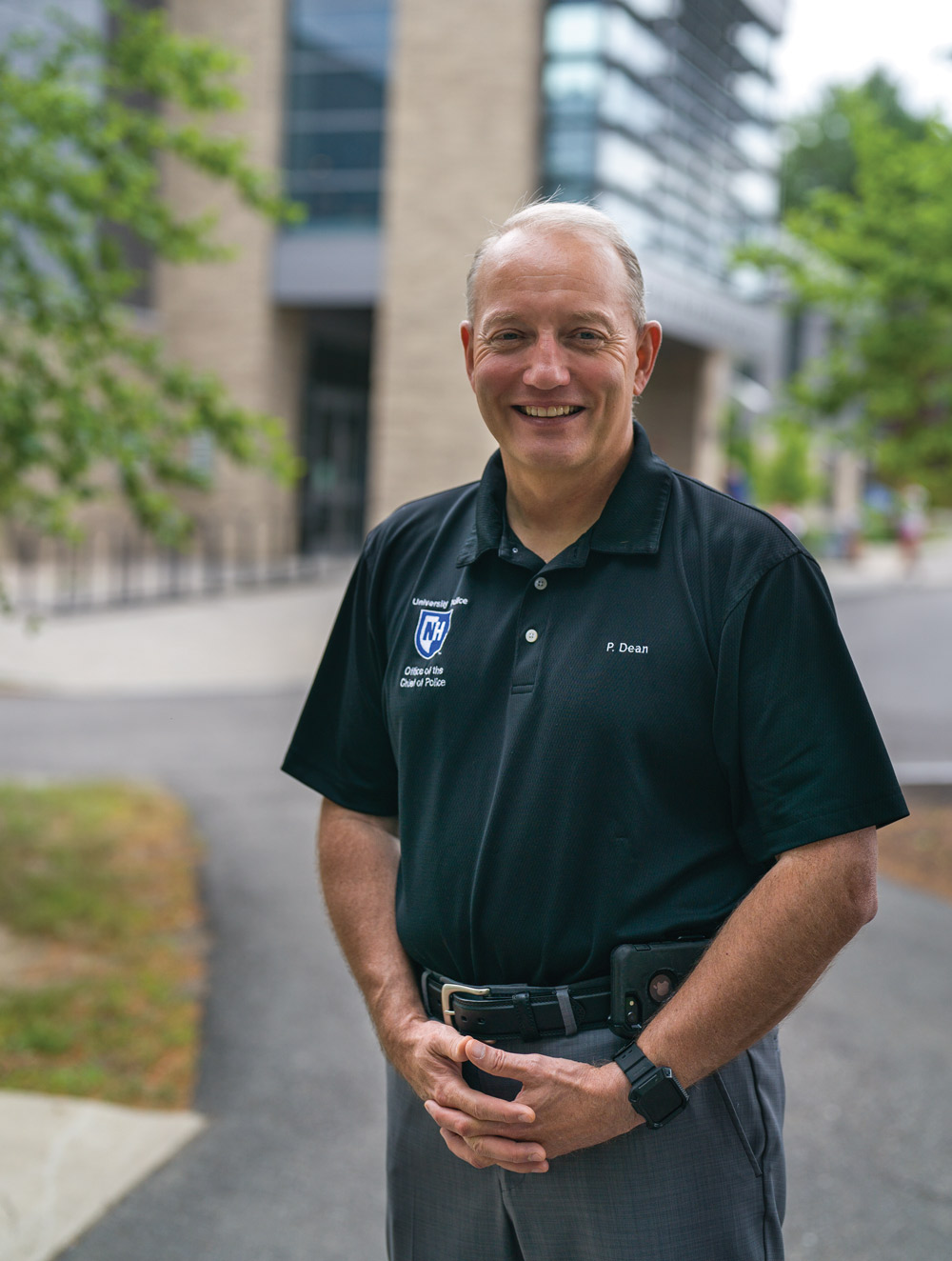
◆
UNH Magazine is published three times a year by the University of New Hampshire, Office of University Communications and Public Affairs and the Office of the President.
© 2021, University of New Hampshire. Readers may send letters, news items and email address changes to alumni.editor@unh.edu.
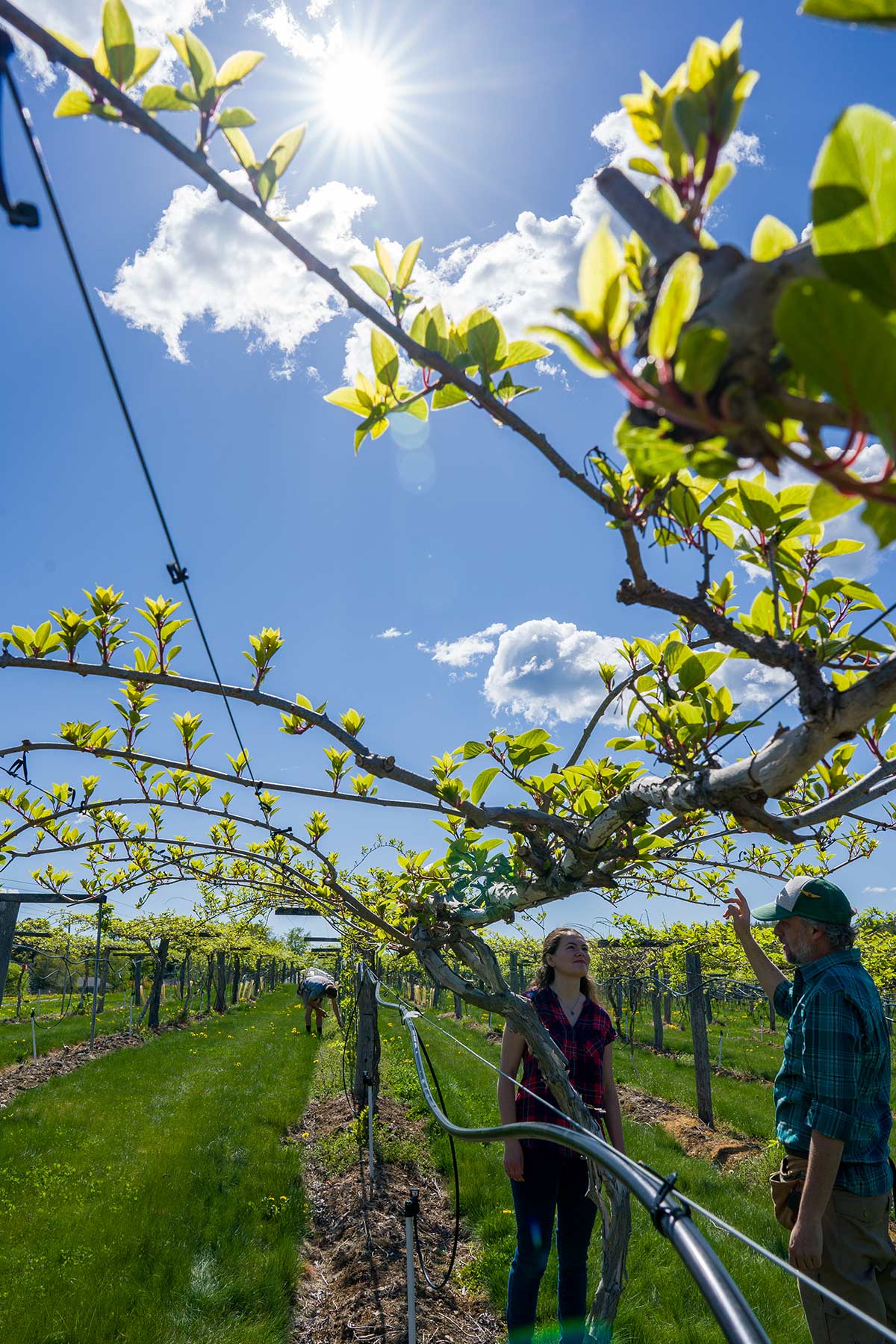
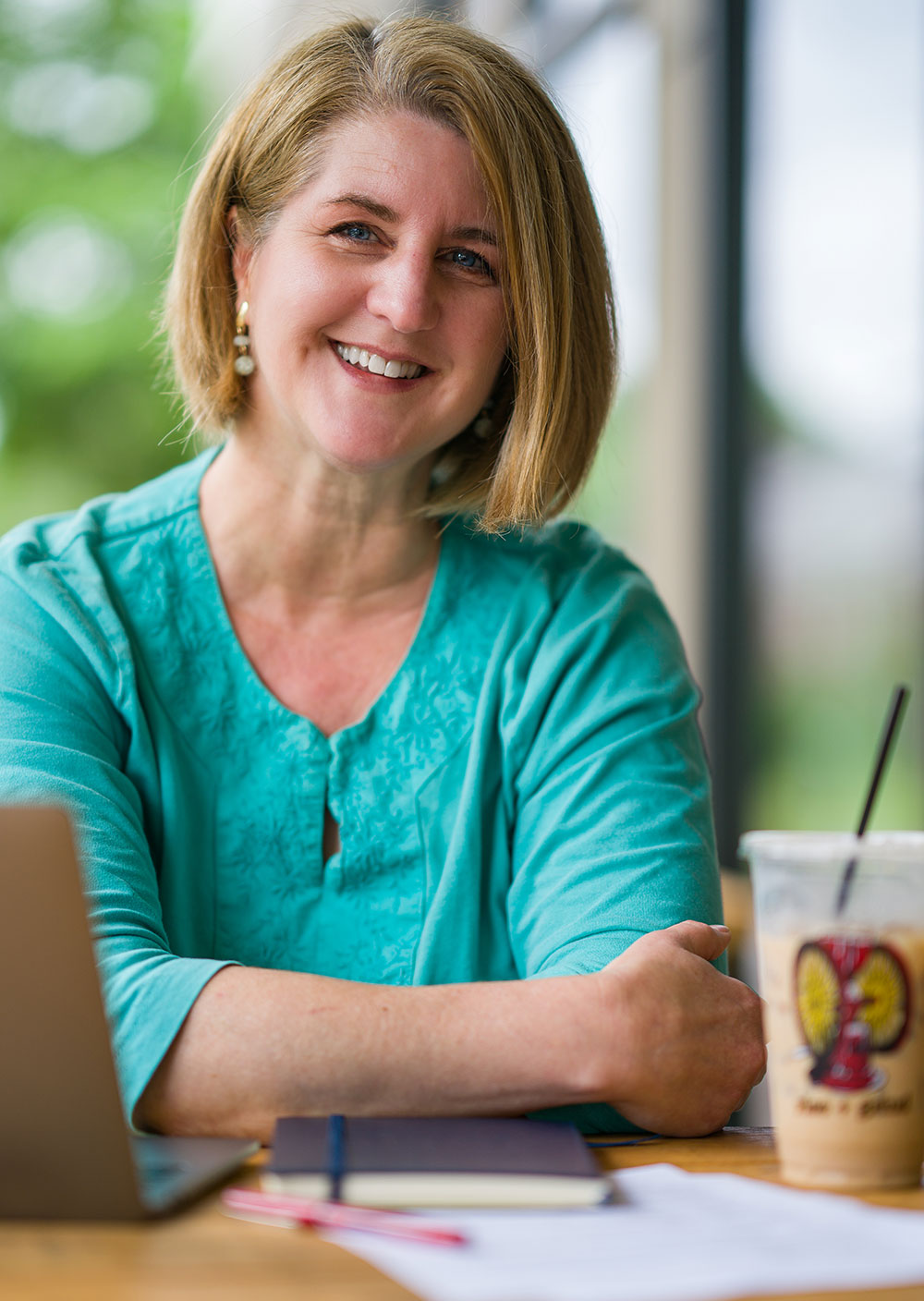
f someone were to make a bingo card of terms popularized by the coronavirus pandemic, there would be at least a few obvious nouns and noun phrases to fill the squares: social distance, contact tracing, COVID bubble, virtual/remote [fill in the blank], mask mandate, PPE. Among the new verbs that have made their way into the pandemic argot over the past 16 months or so, the one that sticks with me the most is pivot. When the pandemic hit, we pivoted to remote learning and social distancing; as vaccine availability has become widespread and we’ve gotten the hang of our new normal, schools and workplaces and restaurants and retailers have pivoted again to in-person experiences and business as usual.
For me, at least, “pivot” was one of those words that, once I became aware of it, I started hearing everywhere (at the risk of dating myself, it called to mind an episode of the 1990s sitcom “Friends” in which one character instructs two others on the delicate art of maneuvering a large couch up a narrow stairway by barking “PIVOT!” at various intervals). A pivot is a very specific type of turn: not a subtle shift or minor adjustment, but a swift and decisive change of direction. As jargony as the term struck me at first, I soon realized there was no better verb to describe the shift of gears virtually all of us experienced back in March 2020. There wasn’t time to hesitate, to ponder options, to make small changes and hope they’d suffice. We all pivoted and started down a brand-new path.
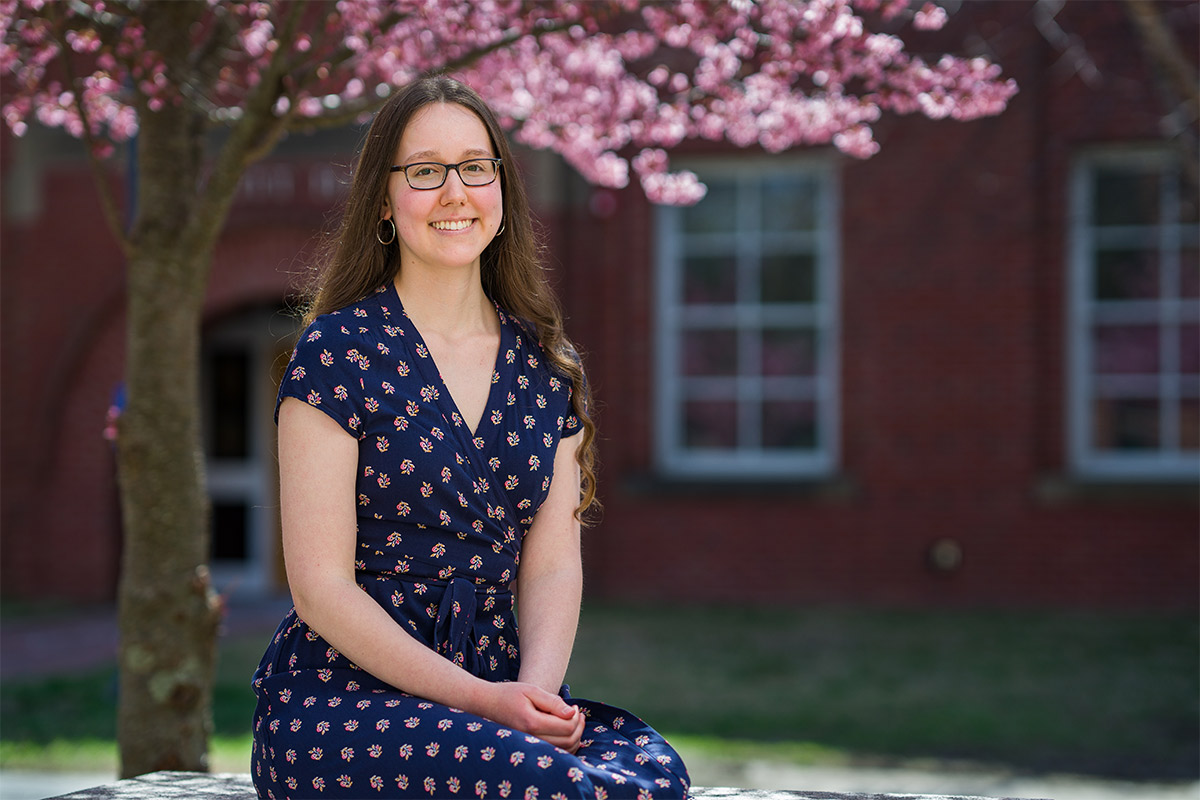
Photo By Jeremy Gasowski
here’s smart, and then there’s SMART. With scholarship success rates — a measure of the percentage of scholarship applicants who receive awards — that place the University of New Hampshire among the best colleges and universities in the country, it turns out that UNH undergraduates are both.
In April, Julia Hilinski ’23, Eric Smith ’23 and James Wirth ’23 were awarded Science, Mathematics, and Research for Transformation (SMART) scholarships through the Department of Defense (DoD). Awarded to undergraduate or graduate students in STEM-related fields, SMART scholarships include full tuition and related fees, a $25,000 to $38,000 annual stipend, summer research internships and employment placement within the DoD after graduation.

usiness analysts are often thought of as the bridge between companies’ IT departments and their management. Technologically and business savvy, they take large quantities of data, analyze it to build reports that help make sense of it and provide actionable insights to drive strategic decision-making in their organizations.
To provide New Hampshire and regional businesses with the critical help they need to sustain a competitive advantage, UNH’s Peter T. Paul College of Business and Economics has launched a new Business Analytics Initiative, fueled by a $6 million gift from Peter T. Paul ’67. In 2008, a $25 million gift from Paul significantly funded the new state-of-the art college, the former Whittemore School of Business and Economics that was renamed in his honor at its 2013 opening.
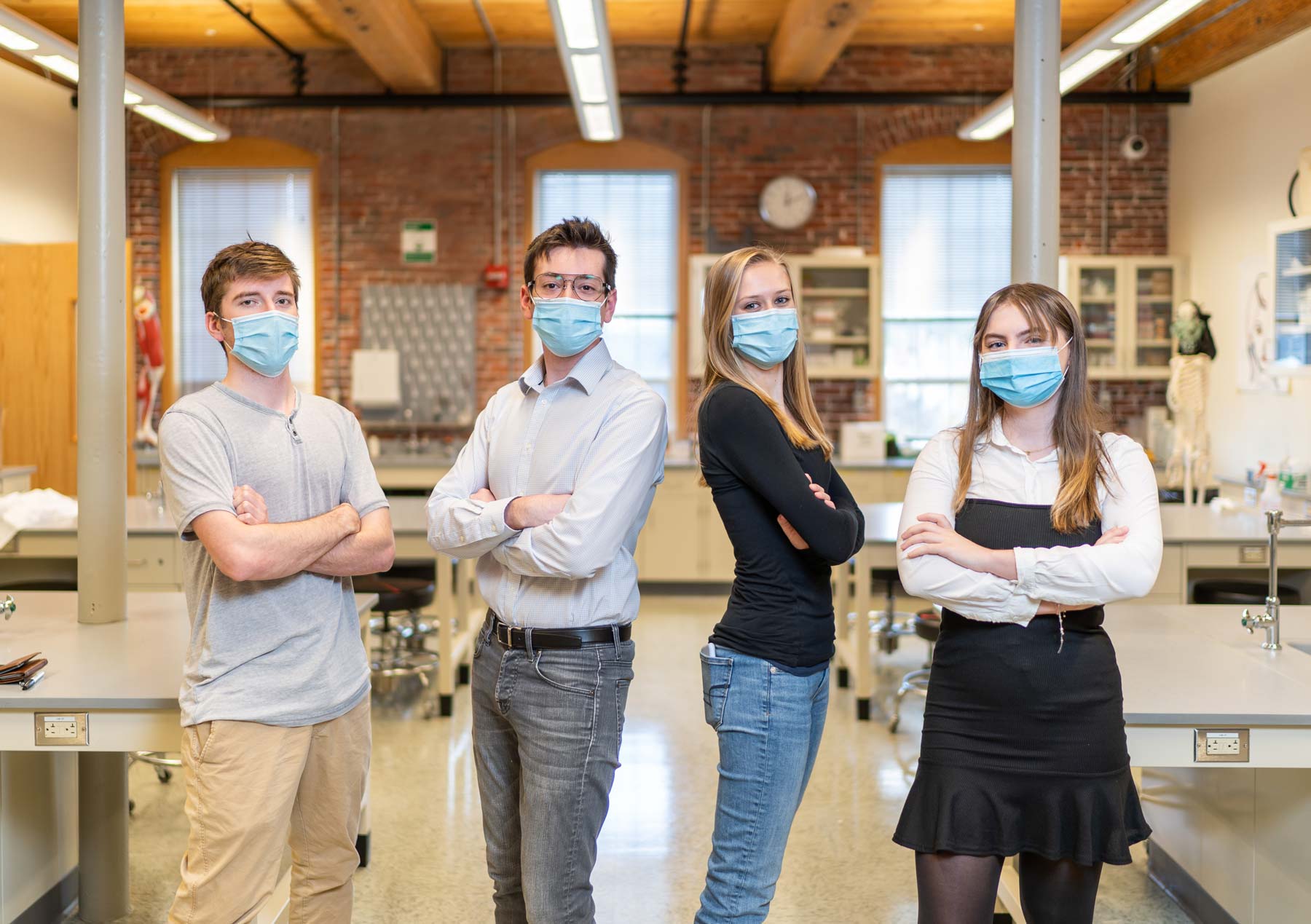
ntibiotic resistance is one of the top health crises the world will face in the coming decades. Among the bright minds bringing their intellectual muscle to bear on the issue is a team of students from UNH Manchester who developed an experiment to examine how soil bacteria evolve or mutate in space relative to what is observed on Earth. Documented differences could affect the production of future antibiotic compounds, with potential for lasting contributions to both space exploration and the treatment of antibiotic-resistant disease.
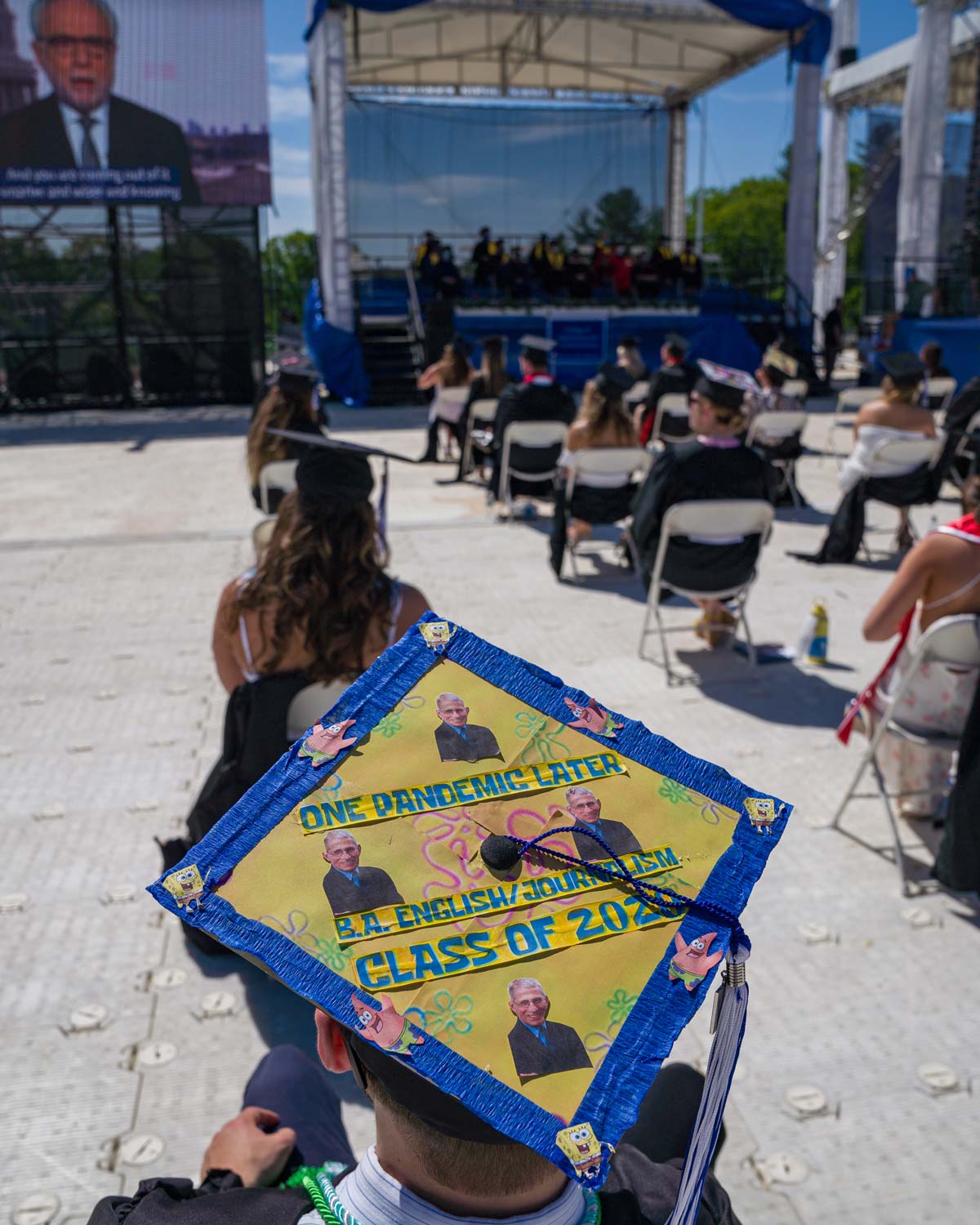
erseverance. Resilience. Agility. Grit.
Over the course of two weekends and eight ceremonies, UNH celebrated the commencement of undergraduate and graduate students from the classes of 2020 and 2021 in Durham, Manchester and Concord, citing at each one the deep reserves of determination and resourcefulness students had brought to bear during a most unusual 15-plus months.
By breaking the traditional university-wide ceremony into separate events for each college and the class of 2020 and by limiting attendance for each graduate to two guests, UNH was able to offer what few other schools could this spring: safe, in-person ceremonies for its graduating students. “Because of the way you all worked together to stay safe and healthy, UNH is one of the very few universities in New England where you are gathered for in-person commencement this year,” noted President James W. Dean Jr., speaking to students in Wildcat Stadium, where socially distanced seats and masks complemented the traditional robes and artfully decorated mortar boards. “Thank you to everyone who made that possible.”

Though the Hills initially shared their experience— a 2 a.m. interaction with a huge, “pancake-shaped” flying saucer occupied by some eight-11 humanoid figures in black military garb — only with officials at Pease Air Force Base in Newington, their story was eventually leaked to the public. Following a five-part feature in a Boston newspaper that thrust the reluctant couple into the national spotlight in 1965, the Hills ultimately resolved to release their own account —a narrative bolstered by artifacts that included Betty’s torn and stained dress, a star map Betty had drawn from her memories of the abduction, a fiberglass bust based on the Hills’ description of the aliens they encountered and more.
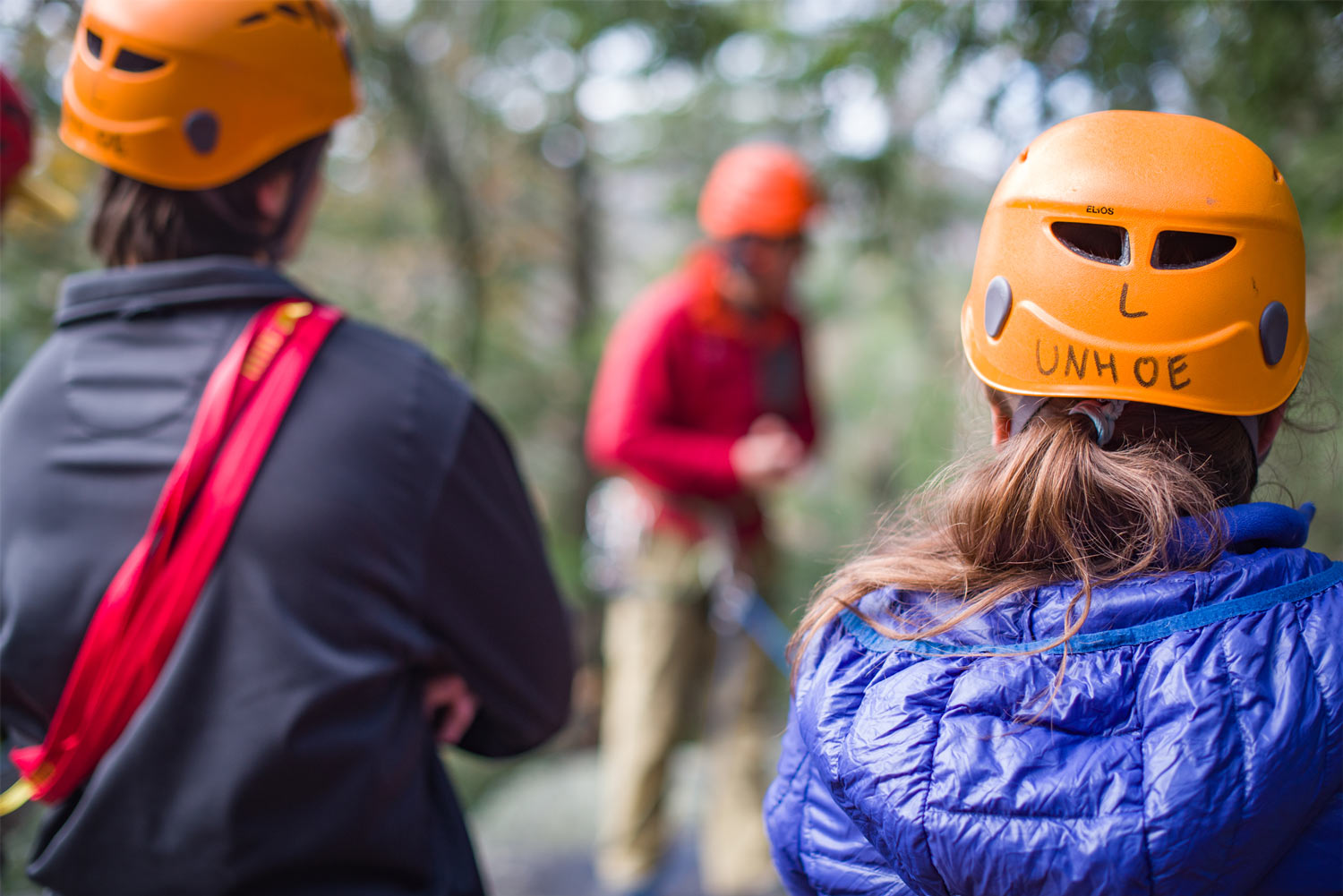
etting outside can do more for teens than keep them physically fit. For some, it can be a life-changing — or even lifesaving — intervention. Now, with grants totaling $2.97 million, UNH’s Outdoor Behavioral Healthcare Center will soon be able to quantify the therapeutic benefits of outdoor behavioral health (OBH), or wilderness therapy, a prescriptive treatment for teens struggling with depression, anxiety and substance use disorders, through a first-of-its-kind randomized study.
“Mental health and substance abuse issues in adolescents have become major societal problems, forcing parents and health providers to look for innovative treatment options that may better suit some teens,” says Michael Gass, professor of outdoor education and director of the Outdoor Behavioral Healthcare Center. “Our hope with this study is to uncover definitive answers about the benefits of wilderness therapy from a behavioral, social and cost point of view.”

s the biological analog of UNH’s wildcat mascot, the bobcat holds a special place in the heart of many UNH students and alumni. But a recent study published in the Journal of Wildlife Management suggests the feeling might not be particularly mutual.
Researchers with the College of Life Sciences and Agriculture and the New Hampshire Agricultural Experiment Station have documented elevated cortisol levels in hairs taken from bobcats living closer to residential and agricultural areas. A hormone found in all mammal species — humans included — cortisol plays an important role in stress response. Higher levels of cortisol in hair samples are indicative of higher levels of the hormone circulating in the cats’ bloodstream, released in response to increased levels of stress.

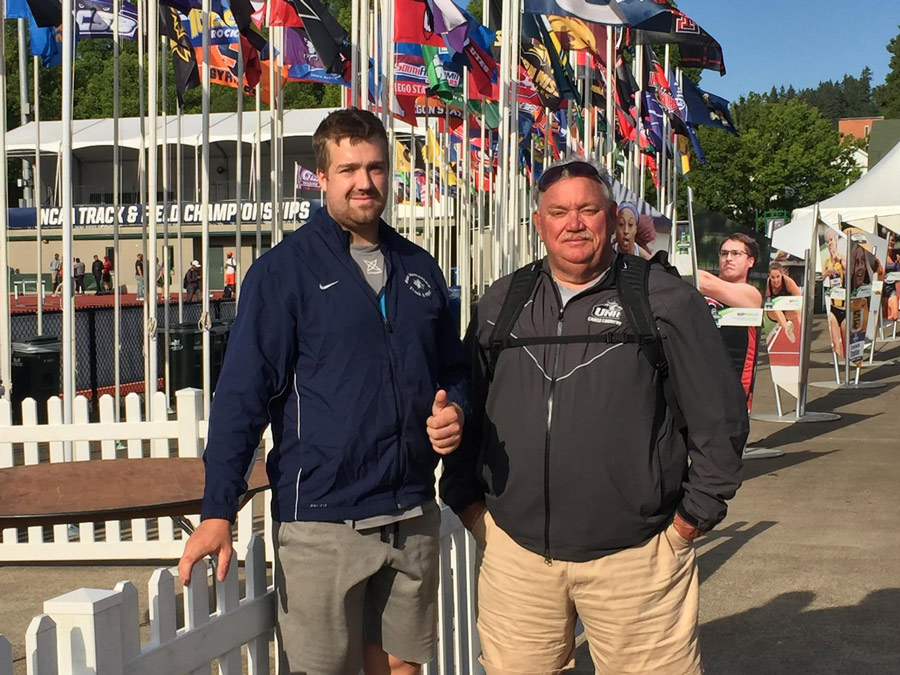
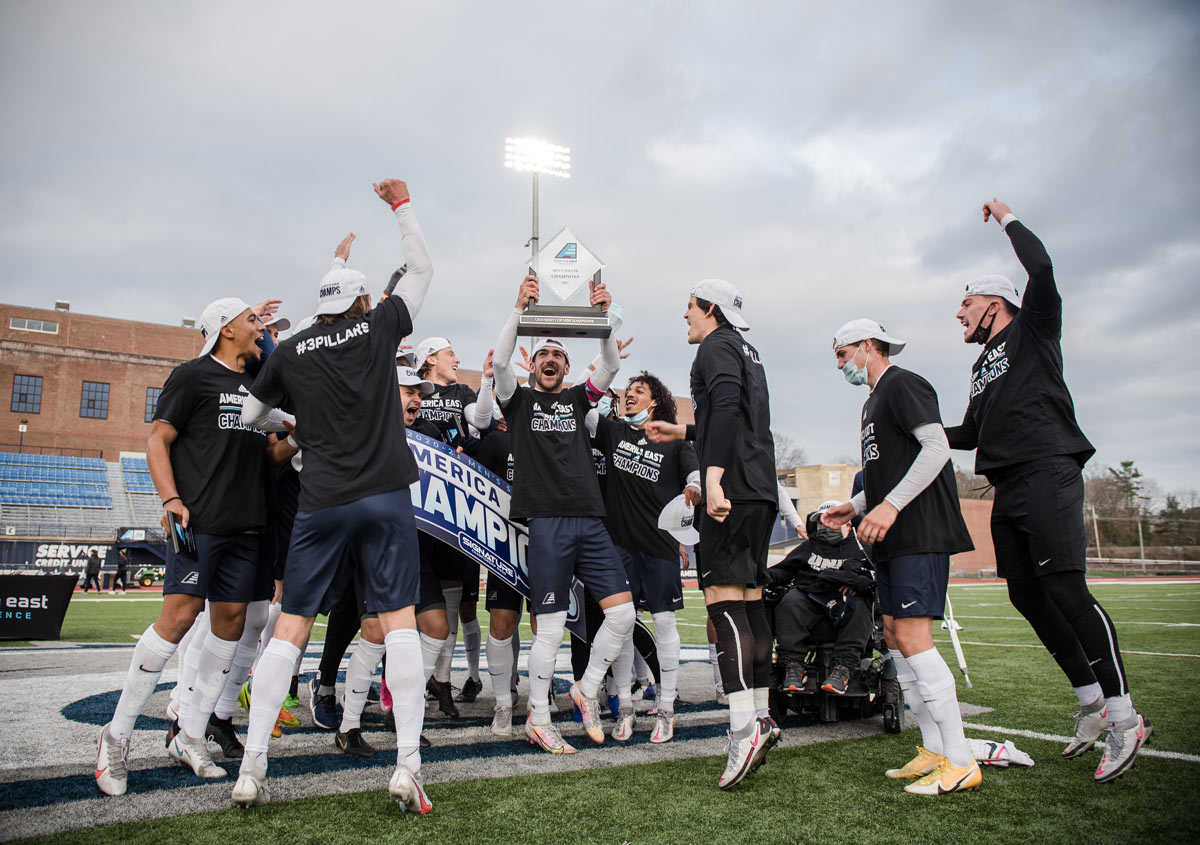
n April, the UNH men’s soccer team became just the third program in America East history to win three consecutive championship titles, besting the University of Vermont Catamounts, 2-0, at home April 17. In a shortened and somewhat unconventional season that was moved from fall to spring because of the COVID-19 pandemic, UNH put up a 6-0-1 regular season record and made quick work of its America East tournament opponents, shutting out first the University of Hartford and then UVM at Wildcat Stadium.
The win secured the 10th-ranked Wildcats their fourth consecutive trip to the NCAA Division 1 soccer tournament in a field that was cut from 48 to 36 teams because of the pandemic. After earning a first-round bye, the Durham ’Cats faced the Wildcats of the University of Kentucky, coming out on the short end of a 2-0 game on May 2. The team concluded its season with a .850 winning percentage — a school record.

and
Science
e’ve all read stories about individuals who become briefly capable of superhuman feats when faced with a threat to their loved ones — in the classic example, it’s the mother who singlehandedly lifts a car off her trapped child. There’s a name for the phenomenon — hysterical strength — and a theorized explanation: a flood of hormones including adrenaline, cortisol and endorphins that is released in response to extreme stress and allows muscles to tap into their maximum strength even as it blunts the brain’s perception of pain.
As showy as it is, hysterical strength is also fleeting; the mother who lifts the car up can’t do so for more than a few seconds. It takes an entirely different kind of superhuman strength to face a threat that’s settled itself in for the long haul. A chronic illness, for example, or a life-limiting one. A disease your child has just been diagnosed with that’s so rare it not only has no known treatment, its cause and mechanism aren’t even fully understood. So rare, in fact, you haven’t even heard of it yourself, even with your newly minted Brown University M.D. and Ph.D. in neuroimmunology in hand.


avid Kaye worked with students over Zoom to rehearse and then present an adaptation of the play “The Curious Incident of the Dog in the Night-Time,” which should have opened live on campus in 2020 just after spring break.
Rachel Campagna offered remote one-on-one office visits where she asked students to tell her one boring thing about themselves in an effort to get to know them. Fifty out of 70 students signed up.
And Gregg Moore created virtual field trips for students who, in normal times, would have been right there with him in the bogs, marshes and dunes captured in his videos.
s UNH Police Chief Paul Dean remembers it, spring semester 2020 had gotten off to a pretty typical start, with the serious work of policing a campus of some 13,000 students punctuated by lighter moments: posting on the department’s social media account about its “Coffee with a Cop” community outreach program or alerting followers to a power outage in a dorm. The campus was busy, the buildings full of faculty, staff and students — many of whom were looking ahead to spring break and finalizing their travel plans.
9 Rickey Drive
Maynard, MA 01754
bryantnab@yahoo.com; 978-501-0334
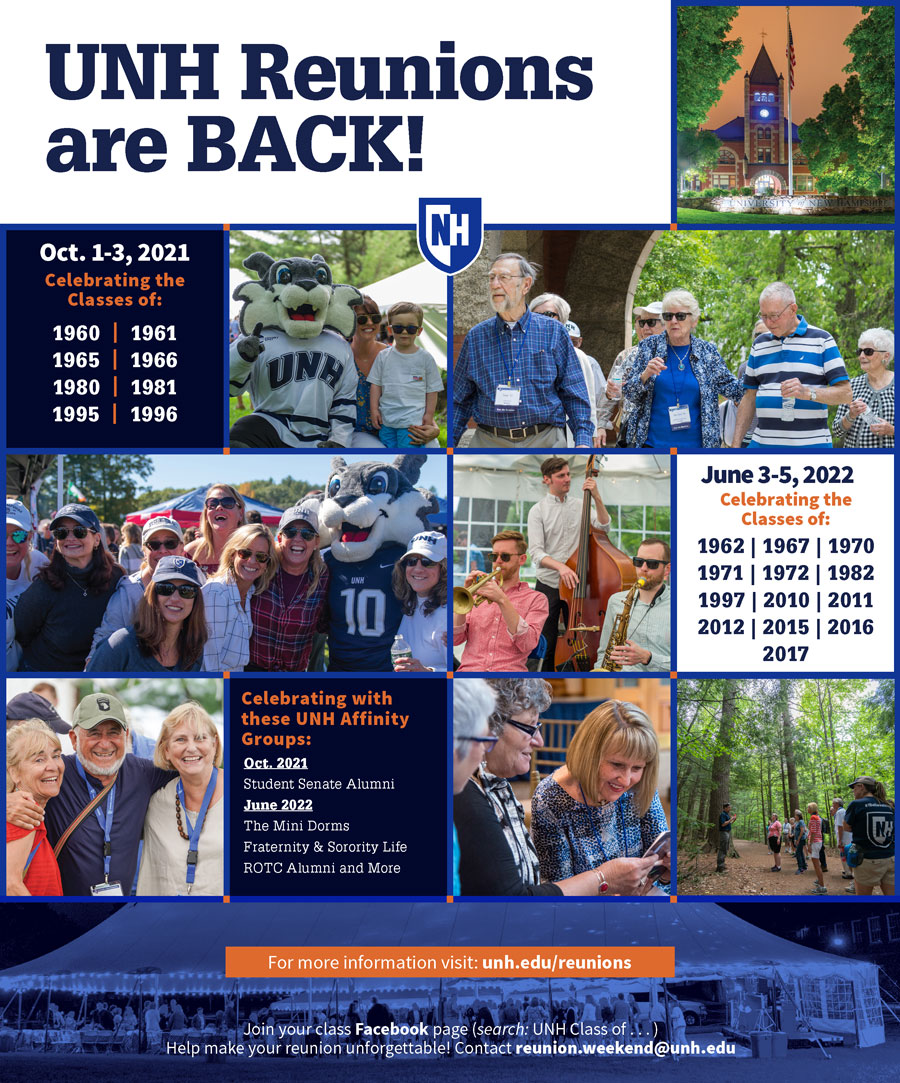
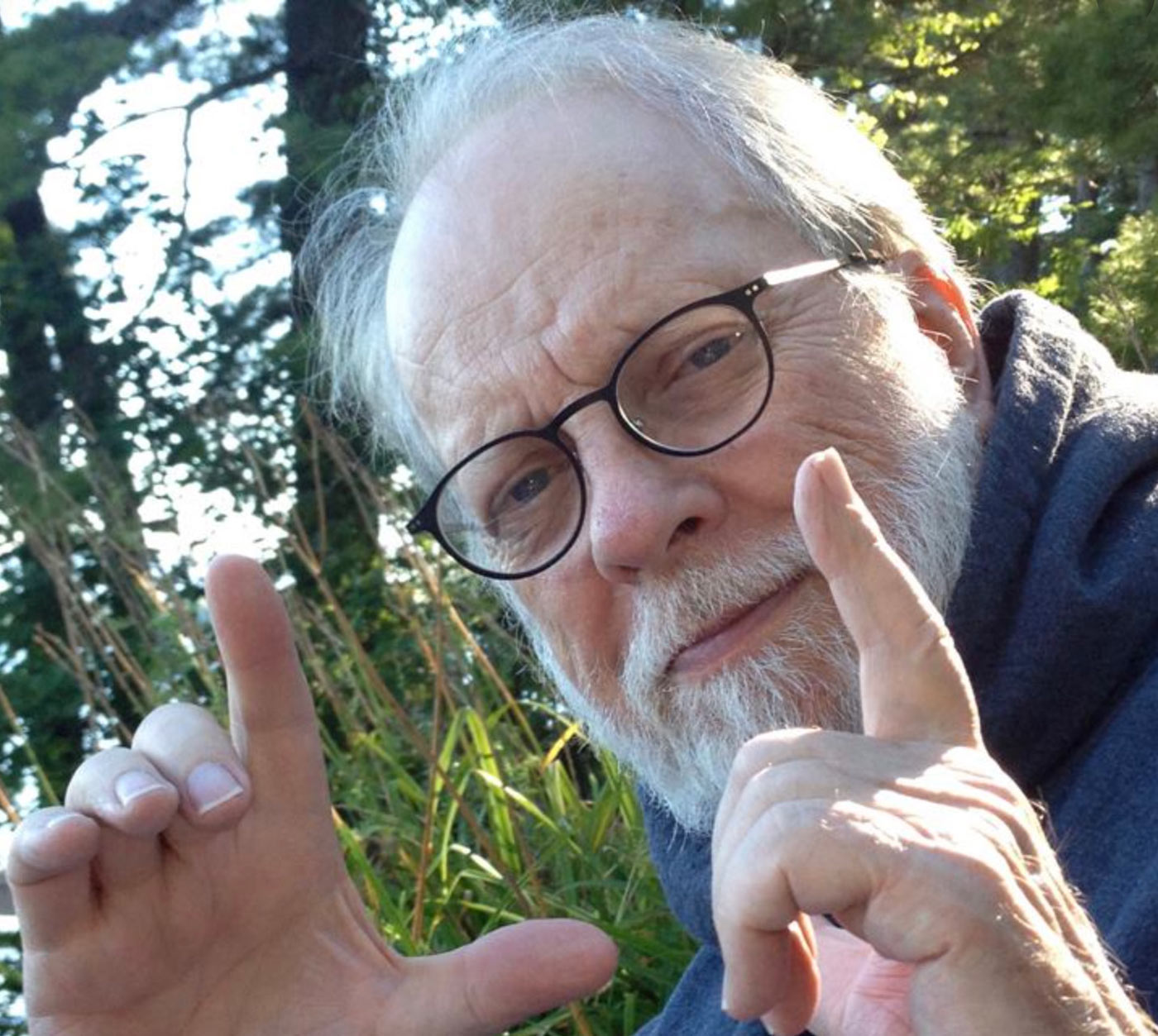
hen Charles Sawyer ’62 saw B.B. King engaging a small group of fans in conversation between sets during a 1968 performance at Lennie’s on the Turnpike in Peabody, Massachusetts, he decided to casually amble into the crowd. That’s when King spotted him.
“He broke off his conversation and looked toward me and I thought, ‘Oh God, he thinks he knows me,’” Sawyer says. “I started trying to figure out ways to say, ‘I’m not who you think I am, I’m just a nobody.’”
For about five more minutes, that was probably true.
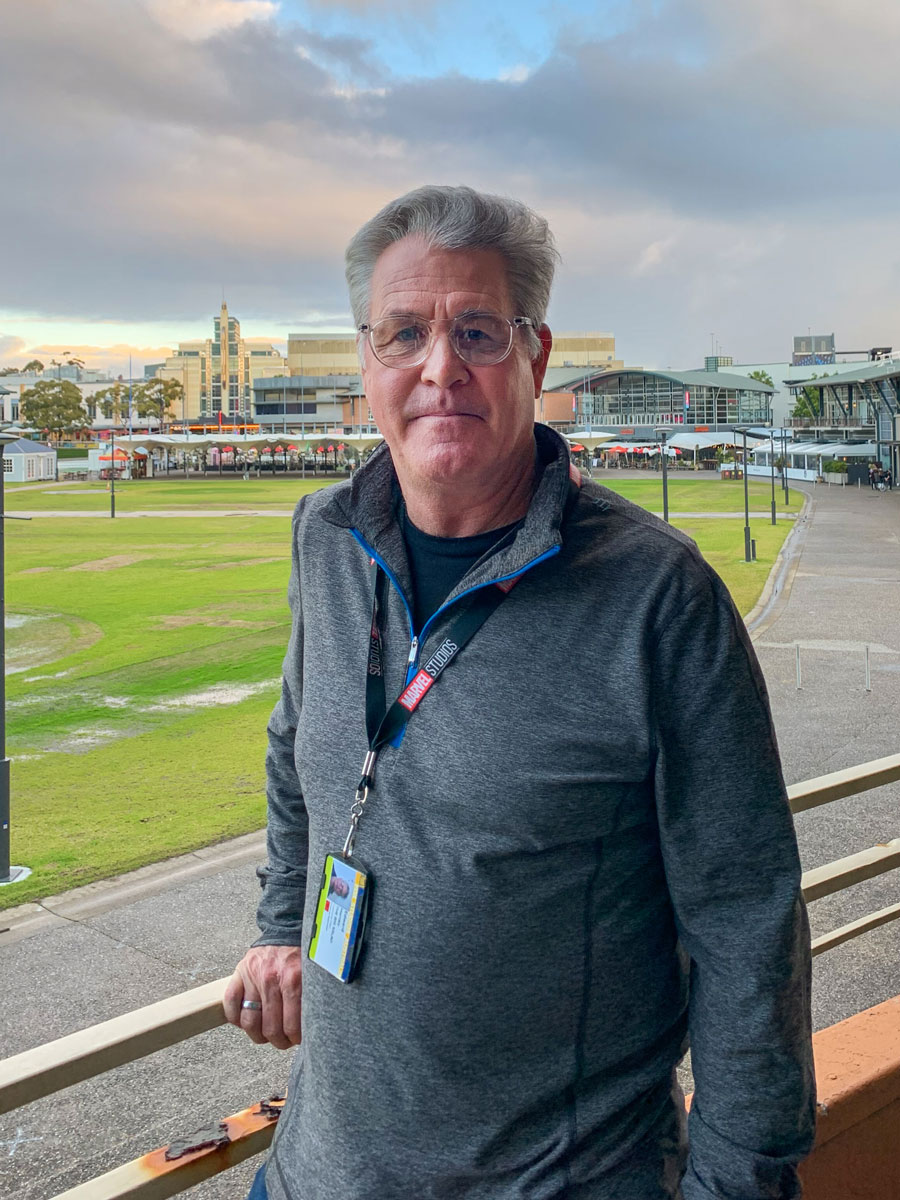
dward Hanley ’83 has costumed Larry Bird, strapped shoulder pads to Mark Wahlberg, had his honeymoon paid for by actor Robert Conrad and walked sets alongside the likes of Chadwick Boseman, Matt Damon, Will Smith and Brad Pitt.
Not bad for a guy who initially moved to Los Angeles to work at a restaurant his friend was managing.
That restaurant gig proved to be short-lived – six months after arriving in L.A., Hanley earned himself a job on the crew of “First and 10,” one of HBO’s first original series in the early 1980s. The show, based on a fictional professional football team, aligned with Hanley’s passion for sports – a lifelong sports fan, he’d completed an internship in the WBZ sports department and called hockey and football games on the radio – and he quickly earned the role of football coordinator, hiring the players and managing all details of the football uniforms.
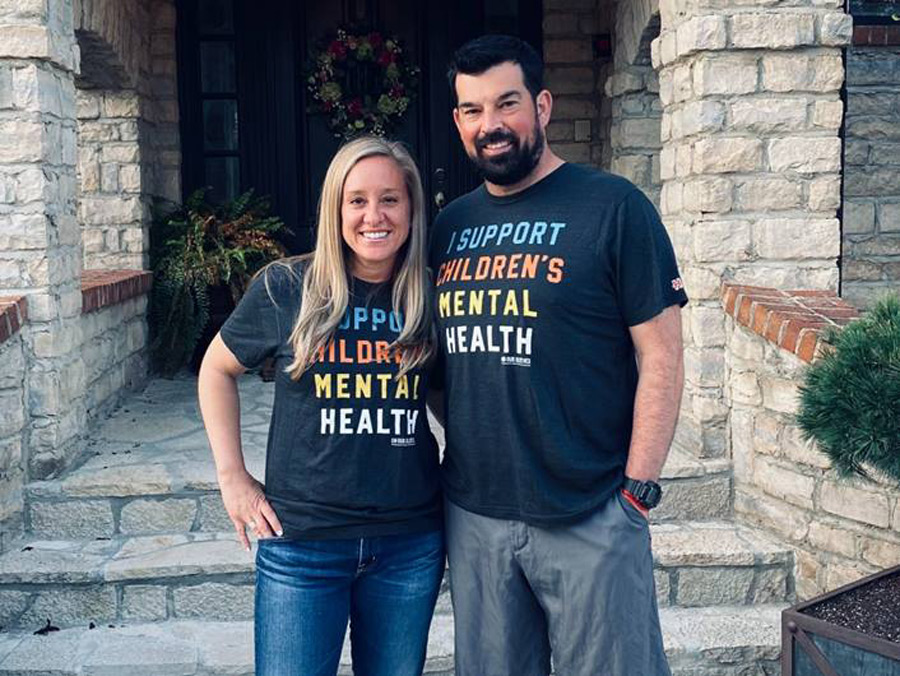
s head coach of Ohio State University’s renowned football program, former UNH record-setting quarterback Ryan Day ’02 knows about the importance of strength. He knows that for elite athletes like OSU players, that strength comes in the form of both physical prowess and mental preparedness to make each player game-day ready every time they take the field.
That mental well-being isn’t just part of Ryan’s winning athletic philosophy — it’s a cause close to his heart and that of his wife Christina (Nina) Spirou Day ’00. Not only have they experienced loss of a loved one related to mental health, but they’re also parents of three young children — and, since 2018, surrogate parents to the OSU football family.
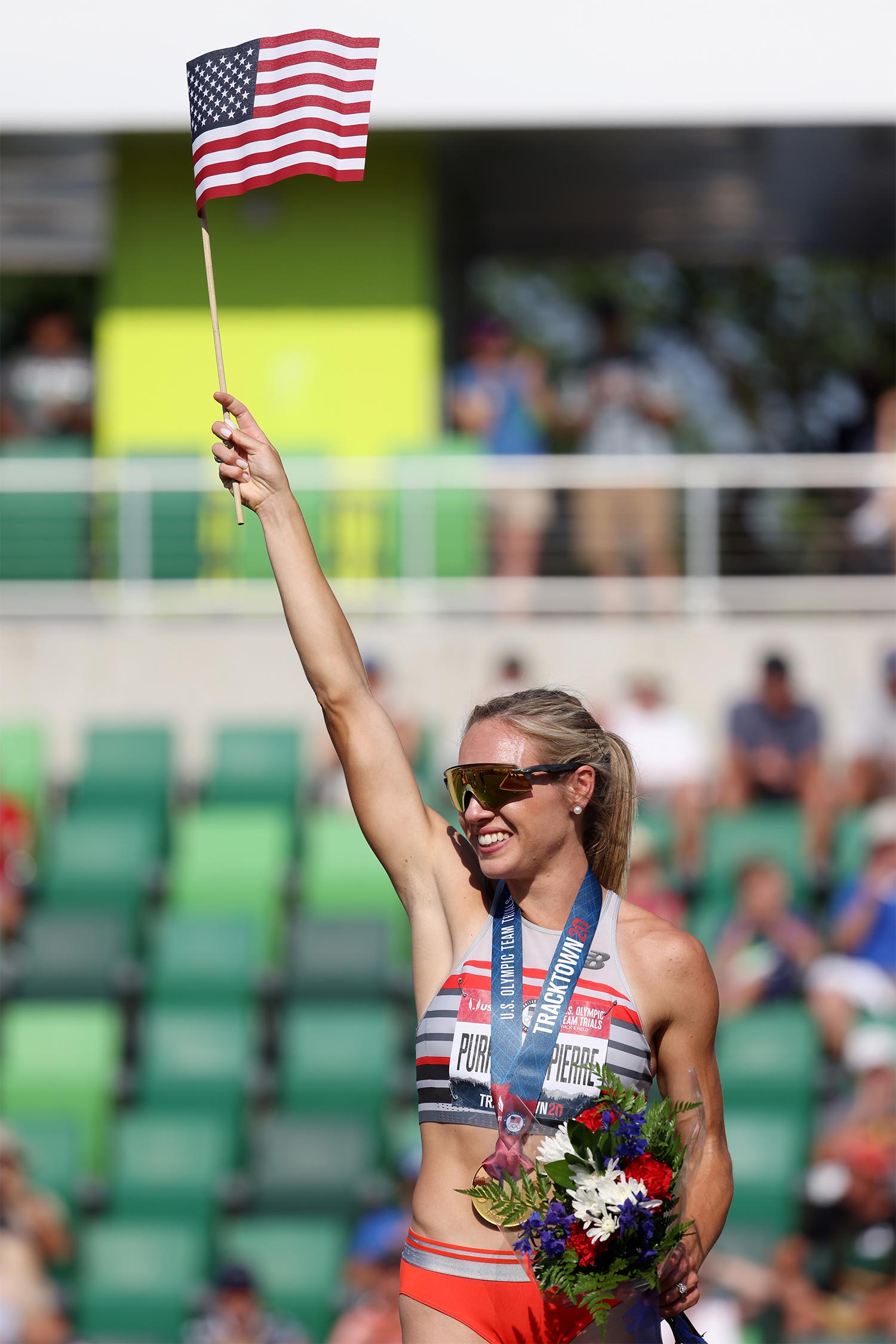
So said the T-shirts worn by a number of family members and friends who traveled to Eugene, Oregon, in June to watch Elle Purrier St. Pierre ’18 compete in the U.S. Olympic Team Trials for track and field at the University of Oregon’s storied Hayward Field. On June 22 Purrier St. Pierre made good on that claim, winning the women’s 1,500-meter U.S. Olympic Trials final in 3:58.03 to punch her ticket to the Tokyo Olympics, besting second-place finisher Cory McGee by more than two seconds and breaking Mary Decker Slaney’s 33-year-old Olympic Trials record in the process. Purrier St. Pierre advanced to the final after winning her first heat in 4:11.78 and her second heat in 4:09.18.
The most decorated athlete in UNH history — an NCAA champion, 11-time All-American and 17-time America East champion as well as the holder of six individual and four school relay records — Purrier St. Pierre is the fourth Wildcat with ties to the UNH track and field program to represent the United States at the Olympics, preceded by Richmond “Boo” Morcom ’47, Joanne Dow ’86 and Clare Egan ’11G. The Tokyo Olympics take place from July 23 through Aug. 8; the first round of the women’s 1,500 will go off on Aug. 1. If Purrier St. Pierre continues to run the way she has been for the past 18 months — in addition to her Trials mark, she’s the U.S. women’s record holder in the 1-mile and 2-mile distances — Elle’s time could very well be then, too.
